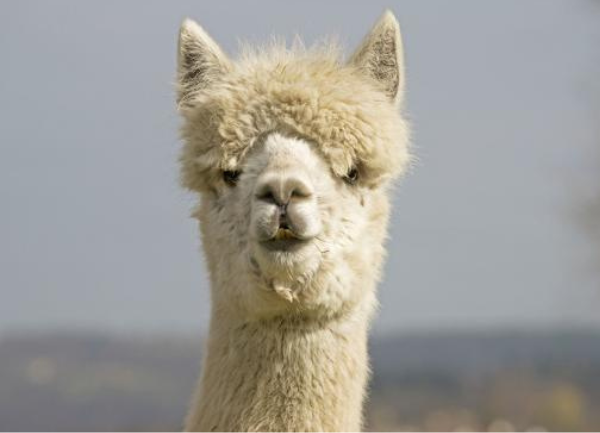BREEDING WHITE TO GRAY ALPACAS
There is a great deal of ongoing discussion about breeding white to gray alpacas. Our understanding of genetics is always ongoing and rarely absolute in the results. The following is some basic information to consider with various color combinations when breeding alpacas.
Ideal Alpaca Breeding
All breeders want to avoid cria defects. If you are just starting to look into alpacas, you may not have heard about blue-eyed all-white alpacas. Most often they are born completely deaf. The often make a great fiber animal as they have excellent fleece, but a new breeder should avoid putting one in their breeding program. Just keep them with a herd if they are deaf so they can pick-up on visual cues from their herdmates. Otherwise, they live out a healthy life as any other alpaca.
What does a blue-eyed all-white alpaca have to do with grey alpacas? Now we're talking genetics.
There is something called a "white-spot gene" that certain alpacas carry. These alpacas have a white spot anywhere on the animal. In otherwords, they're not a solid color. They may have a small white spot that is hidden between toes or in the ear canal or they may have white faces, a tuxedo look, white legs, pinto coloring, etc.
The grey color is thought to be from a combination of a merle gene and the white spot gene. Merle genes are linked to deafness, blindness, and sterility. All of these problems are associated with grey alpacas.
When a cria gets the white-spot gene from both mom and dad, they are born all-white and blue-eyed with a high probability of being deaf.
The incidence of deaf blue-eyed whites is linked to grey alpacas being bread to white-spot animals.
You can avoid this by breeding your grey female to a solid colored male. White is a solid color you say? True, but an all-white alpaca might have the white-spot gene, you just can't see it because they are solid white. Breeding white to gray alpacas therefore is probably not an ideal breeding program.
Very few solid grey alpacas exist. It is not know if breeding a white-spot grey to a solid grey will reduce your chances of a deaf alpaca.
When mating alpacas, you should choose a true (make sure there are no hidden white-spots) solid black or dark bay color to breed to.
The advantages of breeding your grey female to solid dark are:
-
You will avoid blue-eye all-white deaf animals.
-
Your grey female will have a better chance of live birth success.
-
You have the same chance of producing a grey alpaca with a solid color as you do with whites with far less risk to offspring.
Can you successfully breed to an all-white animal with your grey female? Yes, we have, but there is an inherent risk. We have never had a problem breeding our grey males to solid or white-spotted girls. We usually avoid breeding our grey males to solid or primarily white females unless there is a strong amount of color in their lineage.
There's more to breeding than just getting two alpacas to mate. Genetics is fascinating and should be something you study to understand what kind of herd you are producing for the future.
In conclusion, breeding white to gray alpacas is skirting the risk of blue-eyed all-white deaf alpacas. Better to breed to a solid color and avoid the defect. Your breeding program will be better if you follow this tip.
